IT company human capital assessment using SFIA criteria
What is the main resource of any company? According to modern ideas, these are, of course, people. Yes, very often it can only be formal statements, profanity is a person above all else, orientation to personnel, our people, and so on.
Of course, everything very much depends on the industry, market and the environment as a whole.

It is no secret that the IT sector is most dependent on the quality of staff. And if in conditional retail (yes, yes, I know that this can be argued) due to the competent configuration of all processes, the influence of personnel can be significantly offset, then it’s much more difficult to do the same, say, in software development.
Competition in the information technology market, in my opinion, is closest to perfect. And this means that the quality of the services provided and the degree of customer satisfaction play a paramount role. Only competent and motivated personnel can ensure victory in the competition.
So, people are the main asset of an IT company. This statement is doubly true for a service provider company, such as, for example, ICL Services. Service, as a rule, is provided on the customer’s infrastructure, its IT assets are relatively small and the main role in ensuring the quality of the service provided is played by company employees: engineers, architects, programmers, IT managers.
But how to value this critical asset?
The answer to this question depends on the size of the business. When working in a relatively small company, when all employees are in sight, the use of any formal procedures and criteria may not be too justified. But when the bill goes to hundreds and even thousands of people, this problem begins to require a thorough approach.
Calculating tangible and financial assets is relatively easy. We always know what the distribution of money is between accounts, we can calculate the amount of this or that equipment, classifying it by type and characteristics.
But what to do with people? Professional certifications can help to some extent. However, working in modern matrix structures, the so-called soft skills come out in the first place - the ability to establish horizontal interaction with other people, leadership, understanding of business problems in general.
The development of a set of criteria that allows a comprehensive assessment of an employee is a non-trivial and hardly lifting task for a single company.
Working including on the international market, our company tries to use the best world practices in the field of personnel management. To meet the high requirements for the quality of work, we turned to international experience - a system of professional standards in the field of IT in the era of the digital economy SFIA (Skills Framework for the Information Age) .
Unfortunately, everything looks like in Russia practically no one uses these standards. At least a search in Runet gives an extremely limited number of links in Russian.
The first SFIA was developed in the early 2000s in the UK for the information age, and the current sixth version meets the requirements of the digital economy. Now in development is already the 7th version.

To some extent, the SFIA can be correlated with the register of professional standards of the Ministry of Labor of Russia. SFIA is focused exclusively on IT, does not affect specific technologies and products, but at the same time SFIA is distinguished by its systematic nature, global application in various countries and continuous support in terms of development.
SFIA allows line management, HR and the employees themselves to speak the same language.
Let us dwell in more detail on what SFIA is.
SFIA operates in the following categories:
By definition, a skill is an action brought to automatism through repeated repetitions. Those. SFIA focuses on practical skills, not theoretical training.
Each skill can be demonstrated at seven levels of responsibility.
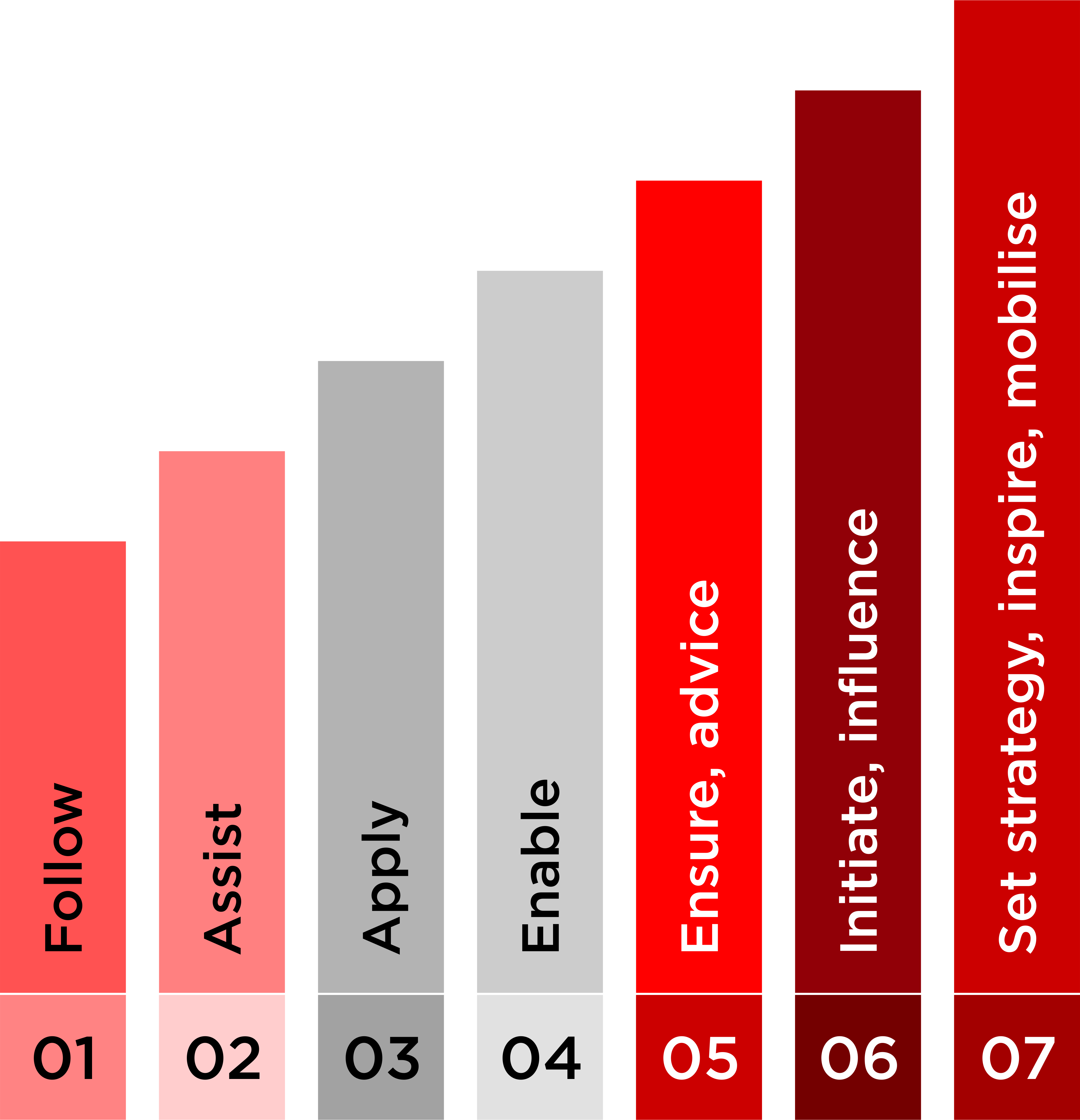
These levels can be used in two ways.
On the one hand, the SFIA defines each level of responsibility using the following attributes:
So, for example, for the first level, the picture will look as follows.
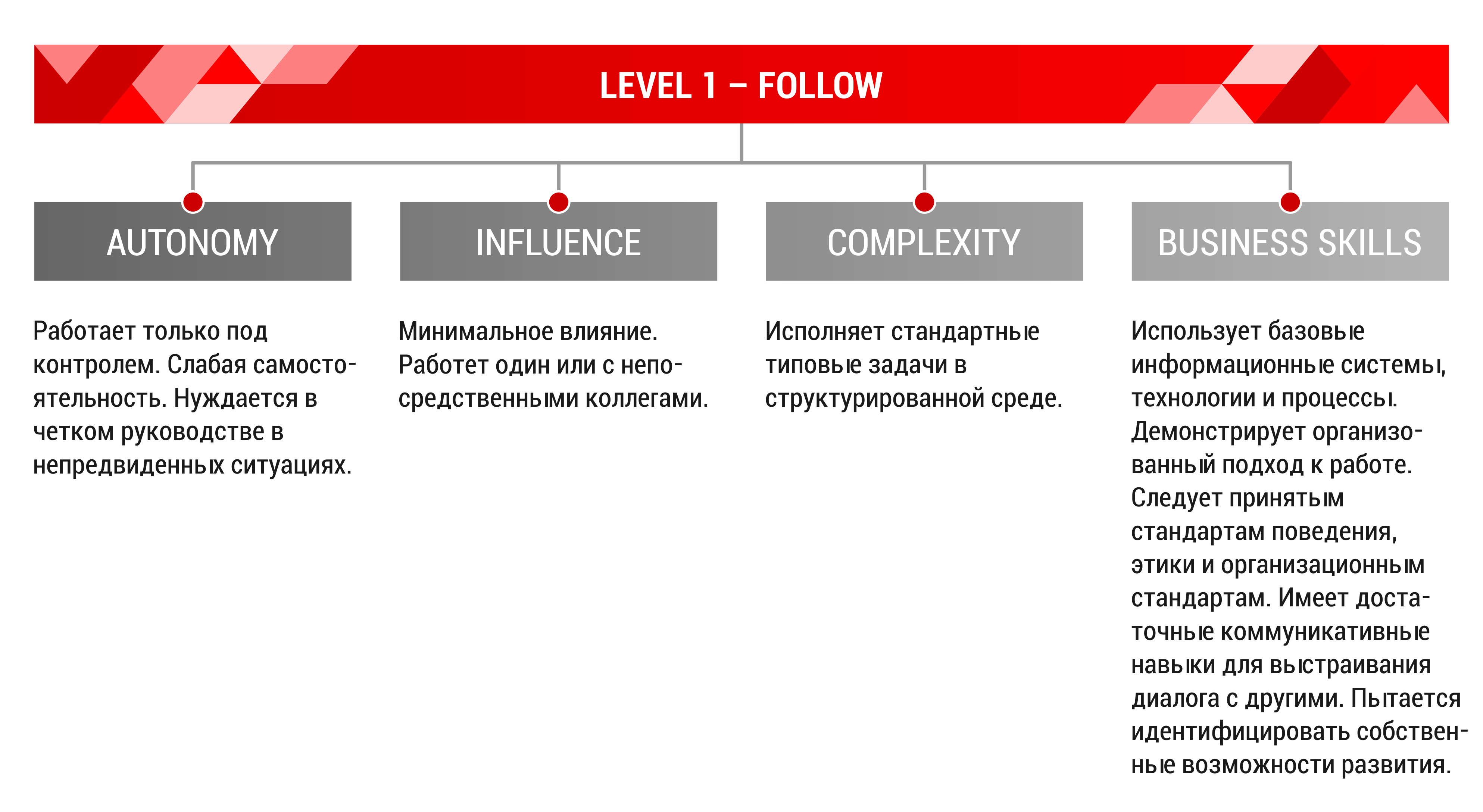
On the other hand, the SFIA provides a systematic set of skills described for each level of responsibility in terms of behavioral characteristics, knowledge and skills.
In total, the 6th version of the SFIA contains a description of 97 skills, classified into 6 categories and several subcategories.
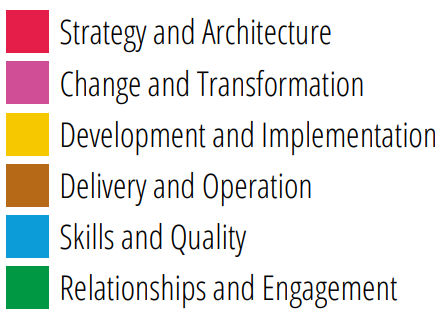
Do not compare SFIA categories with descriptions of organizational roles, functional teams, or personal responsibility areas. This grouping was made rather for the convenience of those who will use the SFIA to describe the profile of a particular position.
Take for example the “IT strategy and planning (ITSP)” skill in the “Strategy and architecture” category of the “Information Strategy” subcategory.
Note that this category contains only 3 levels: 5,6,7. A similar feature is characteristic of almost all skills. Obviously, there is no and cannot be any planning of an IT strategy at low levels of responsibility.
In general, the picture is as follows.
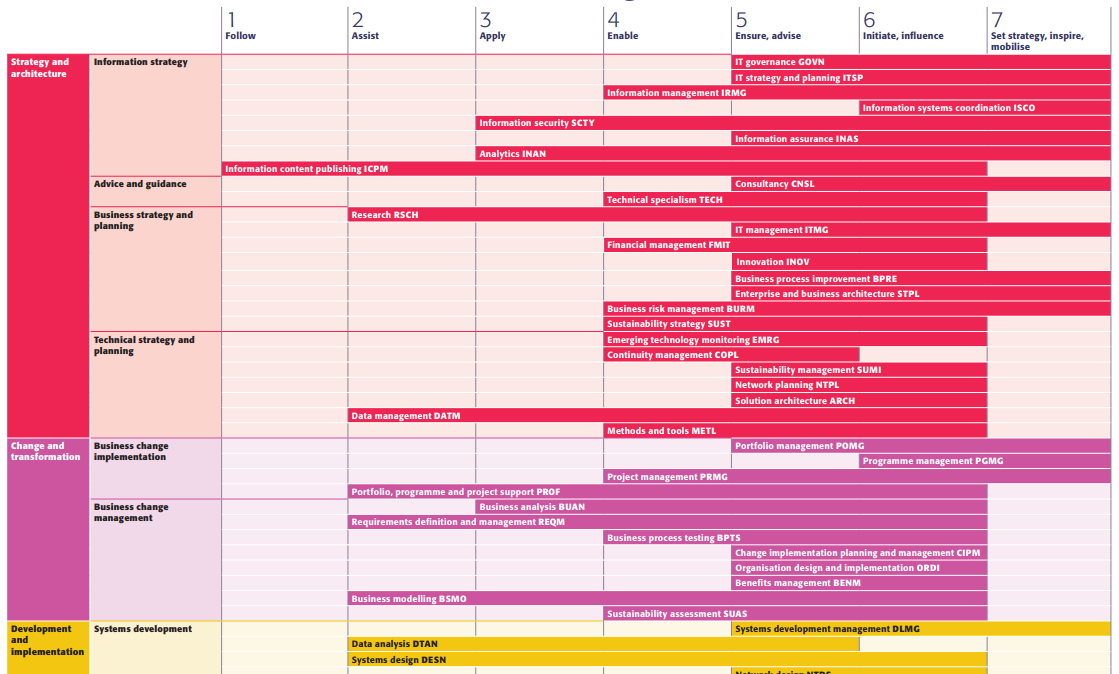
As we saw, SFIA, in the first place, provides a structured set of skills that can be demonstrated by specialists. SFIA does not contain role descriptions. All this falls on the shoulders of a particular company, which, focusing on the needs of the business and its own maturity, will form a unique set of job profiles, using the SFIA skills system as original building blocks.
Let's see what job profiles can look like, using the study conducted by the Australian computer society ACS (Australian computer society).
During the study, more than 5,000 respondents were interviewed. As a result, 25 job profiles were compiled.
The respondents had to determine the basic level of responsibility (in the ACS study this is called the job size), as well as the main and up to 5 additional skills for each profile.
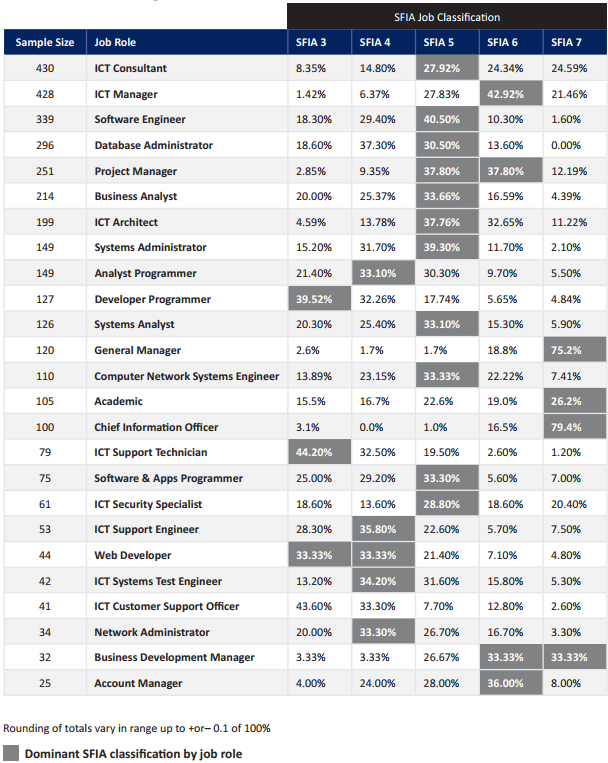
Let's look, for example, on the profile of the project manager.
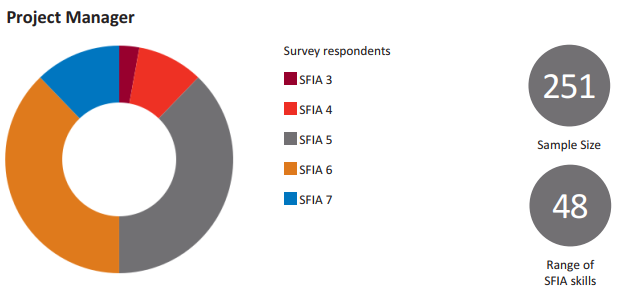
Job Size Alignment: SFIA 5/6
Most commonly identified skills for the role at job size SFIA 6
The graph shows that the votes of the respondents in the sample of 251 respondents were divided approximately equally regarding the level of responsibility of the 5th or 6th should include the profile of the project manager. Therefore, the highest sixth level was chosen to identify skills.
The ACS study accepts that all skills identified for the job profile should be demonstrated at the same level of responsibility. However, in general, this is not the rule. So the company may well set different levels for a particular skill. In addition, we can accept several skills as primary at once.
In general, I would not recommend this study as a guide to action. It contains a lot of controversial issues and, by and large, reflects a certain average idea of Australian IT companies (quite a lot of different ones) regarding what competencies one or another specialist should possess. But as a basis for the formation of their own structure of job roles, this study has the right to life.
We at ICL Services do not unreasonably believe that, in addition to the primary Project management (PRMG) skill, the following should be mandatory in determining the profile of a project manager: Stakeholder relationship management (RLMT) and Business risk management (BURM). While the skill Program Management (PGMG) will relate to the profile of Senior Project Manager well, or, obviously, to Program Manager.
Many will say that for the assessment of project management professionals there is an IPMA ICB (Individual Competence Baseline) standard, which in this subject area will be much more developed than the SFIA. I agree. Using the example described above, I chose what is closer to me at the moment, focusing on my own experience. The value of the SFIA is that it offers a common value system for evaluating a wide range of professionals. However, nothing prevents us from attracting certain specialized standards, including IPMA ICB, to strengthen certain fragments of the corporate matrix of skills and competencies.
Let's move on to the most interesting. How to evaluate the employee's compliance with his position? Again, assessing technical competencies, knowledge of specific products and technologies is quite simple. You can focus on existing certificates or develop your own test system.
But what to do with skills? Do not forget that a skill is primarily a practical skill. It is not possible to verify it using simple tasks with answer options. Definitely need an expert look.
By and large, how to evaluate a person’s work is possible only by observing him in the process of solving practical professional problems. In real life, there are a huge number of factors that not even one of the most sophisticated testing can take into account.
However, conducting field observations is far from always possible. So when hiring, we have only a few hours to determine the level of the applicant. And in everyday activities, current tasks do not always enable an employee to show their best professional qualities.
Therefore, the assessment of compliance with the job profile should be carried out in a fairly short time, but in an environment as close as possible to the real one.
For this we use one of the methods of situational analysis - the case method. The subject is given a description of the real business situation and is invited to conduct an analysis from the point of view of the assessed job profile, to understand the essence of the problems, suggest possible solutions and, finally, choose the best one.

The time to solve the problem is very limited. In this way, not only professional skills are tested, but also the psychological characteristics of the employee, the ability to work under pressure, in conditions of limited time, etc.
So for a project manager on the basis of a case related, as a rule, to decision-making at one of the stages of the project life cycle, it is necessary to make a presentation that includes:
The presentation is evaluated by an expert or a group of experts for the application of the key skills identified for this particular job profile.
As I mentioned above, such an assessment is carried out not only for new employees, but, which in my opinion is no less important, and for those already existing in the process of fulfilling their duties.
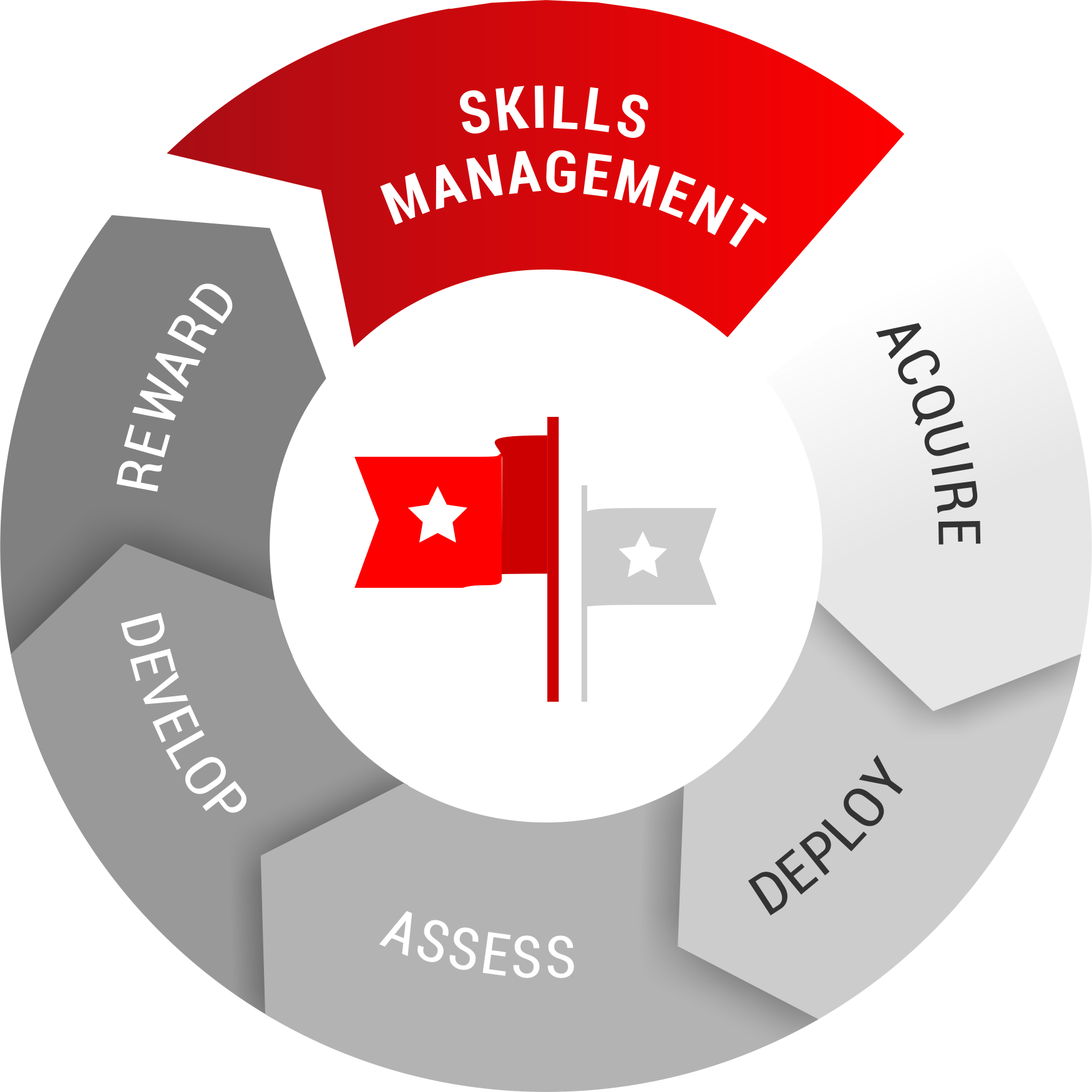
The results obtained are used both for evaluating and managing human capital as a whole, and for developing recommendations for further professional development of personnel, developing training programs, adjusting internal processes and standards, and improving the bonus system.
Of course, everything very much depends on the industry, market and the environment as a whole.

It is no secret that the IT sector is most dependent on the quality of staff. And if in conditional retail (yes, yes, I know that this can be argued) due to the competent configuration of all processes, the influence of personnel can be significantly offset, then it’s much more difficult to do the same, say, in software development.
People as an asset of an IT company
Competition in the information technology market, in my opinion, is closest to perfect. And this means that the quality of the services provided and the degree of customer satisfaction play a paramount role. Only competent and motivated personnel can ensure victory in the competition.
So, people are the main asset of an IT company. This statement is doubly true for a service provider company, such as, for example, ICL Services. Service, as a rule, is provided on the customer’s infrastructure, its IT assets are relatively small and the main role in ensuring the quality of the service provided is played by company employees: engineers, architects, programmers, IT managers.
But how to value this critical asset?
The answer to this question depends on the size of the business. When working in a relatively small company, when all employees are in sight, the use of any formal procedures and criteria may not be too justified. But when the bill goes to hundreds and even thousands of people, this problem begins to require a thorough approach.
Calculating tangible and financial assets is relatively easy. We always know what the distribution of money is between accounts, we can calculate the amount of this or that equipment, classifying it by type and characteristics.
But what to do with people? Professional certifications can help to some extent. However, working in modern matrix structures, the so-called soft skills come out in the first place - the ability to establish horizontal interaction with other people, leadership, understanding of business problems in general.
The development of a set of criteria that allows a comprehensive assessment of an employee is a non-trivial and hardly lifting task for a single company.
Skills Framework for the Information Age - SFIA
Working including on the international market, our company tries to use the best world practices in the field of personnel management. To meet the high requirements for the quality of work, we turned to international experience - a system of professional standards in the field of IT in the era of the digital economy SFIA (Skills Framework for the Information Age) .
Unfortunately, everything looks like in Russia practically no one uses these standards. At least a search in Runet gives an extremely limited number of links in Russian.
The first SFIA was developed in the early 2000s in the UK for the information age, and the current sixth version meets the requirements of the digital economy. Now in development is already the 7th version.

To some extent, the SFIA can be correlated with the register of professional standards of the Ministry of Labor of Russia. SFIA is focused exclusively on IT, does not affect specific technologies and products, but at the same time SFIA is distinguished by its systematic nature, global application in various countries and continuous support in terms of development.
SFIA allows line management, HR and the employees themselves to speak the same language.
Let us dwell in more detail on what SFIA is.
SFIA operates in the following categories:
- skill;
- level of responsibility.
By definition, a skill is an action brought to automatism through repeated repetitions. Those. SFIA focuses on practical skills, not theoretical training.
Each skill can be demonstrated at seven levels of responsibility.

These levels can be used in two ways.
On the one hand, the SFIA defines each level of responsibility using the following attributes:
- Autonomy (autonomy);
- Influence
- Complexity
- Business skills.
So, for example, for the first level, the picture will look as follows.

On the other hand, the SFIA provides a systematic set of skills described for each level of responsibility in terms of behavioral characteristics, knowledge and skills.
In total, the 6th version of the SFIA contains a description of 97 skills, classified into 6 categories and several subcategories.

Do not compare SFIA categories with descriptions of organizational roles, functional teams, or personal responsibility areas. This grouping was made rather for the convenience of those who will use the SFIA to describe the profile of a particular position.
Take for example the “IT strategy and planning (ITSP)” skill in the “Strategy and architecture” category of the “Information Strategy” subcategory.
Note that this category contains only 3 levels: 5,6,7. A similar feature is characteristic of almost all skills. Obviously, there is no and cannot be any planning of an IT strategy at low levels of responsibility.
IT strategy and planning ITSP (ITSP)
General skill description
Creating and maintaining up-to-date strategies to ensure that IT plans meet business goals. Development of plans for the implementation of IT strategies. Work with all stakeholders to implement strategic management through clear goals, a reporting system and monitoring of progress.
Level 7
Leads the formation and implementation of the strategic management structure. Provides information exchange with all interested parties. Manages the creation and regular updating of IT strategies and plans in order to support the strategic requirements of the business.
Level 6
Creates policies, standards, and guidelines that guide how IT strategy and planning are developed. Manages the creation and review of an IT strategy that meets business requirements. Develops, organizes the interaction of all interested parties and implements processes that ensure the inclusion of strategic IT management in the strategic and operational plans of the organization.
Level 5
Ensures that all stakeholders adhere to the approach and schedule defined by the IT strategy. Compares information and generates reports to support strategic IT management processes. Develops plans for the implementation of the strategy. Participates in the development of policies, standards and guidelines that define how to develop IT strategies and planning.
In general, the picture is as follows.

Job profiles
As we saw, SFIA, in the first place, provides a structured set of skills that can be demonstrated by specialists. SFIA does not contain role descriptions. All this falls on the shoulders of a particular company, which, focusing on the needs of the business and its own maturity, will form a unique set of job profiles, using the SFIA skills system as original building blocks.
Let's see what job profiles can look like, using the study conducted by the Australian computer society ACS (Australian computer society).
During the study, more than 5,000 respondents were interviewed. As a result, 25 job profiles were compiled.
The respondents had to determine the basic level of responsibility (in the ACS study this is called the job size), as well as the main and up to 5 additional skills for each profile.

Let's look, for example, on the profile of the project manager.

Job Size Alignment: SFIA 5/6
Most commonly identified skills for the role at job size SFIA 6
| Primary Skill | Project management (PRMG) |
|---|---|
| 2nd Skill | Program management (PGMG) |
| 3rd skil | Systems development management (DLMG) |
| 4th Skill | IT management (ITMG) |
| 5th skill | Consultancy (CNSL) |
| Job Size Defniton: SFIA 6 Initate, in fl uence | |
|---|---|
| Autonomy | Has defined authority and responsibility for a significant area of work, including technical, financial and quality aspects. Establishes organizational objectives and delegates responsibilities. Is accountable for actions and decisions taken by self and subordinates. |
| In fl uence | In fl uences policy formation on the contribution of own specialism to business objectives. In fl uences a significant part of own organization. Develops influential relationships with internal and external customers / suppliers / partners at senior management level, including industry leaders. Makes decisions which impact the work of employing organizations, achievement of organizational objectives and financial performance. |
| Complexity | Performs highly complex work activities covering technical, financial and quality aspects. Contributes to the formulation and implementation of IT strategy. Creatively applies a wide range of technical and / or management principles. |
| Business skills | Absorbs complex technical information and communicates effectively at all levels to both technical and non-technical audiences. Assesses and evaluates risk. Understands the implications of new technologies. Demonstrates clear leadership and the ability to influence and persuade. Has a broad understanding of all aspects of IT and deep understanding of own specialism (s). Understands and communicates the role and impact of IT in the employing organization and promotes compliance with relevant legislation. Takes the initiative to keep both own and subordinates' skills up to date and to maintain an awareness of developments in the IT industry. |
The graph shows that the votes of the respondents in the sample of 251 respondents were divided approximately equally regarding the level of responsibility of the 5th or 6th should include the profile of the project manager. Therefore, the highest sixth level was chosen to identify skills.
The ACS study accepts that all skills identified for the job profile should be demonstrated at the same level of responsibility. However, in general, this is not the rule. So the company may well set different levels for a particular skill. In addition, we can accept several skills as primary at once.
In general, I would not recommend this study as a guide to action. It contains a lot of controversial issues and, by and large, reflects a certain average idea of Australian IT companies (quite a lot of different ones) regarding what competencies one or another specialist should possess. But as a basis for the formation of their own structure of job roles, this study has the right to life.
We at ICL Services do not unreasonably believe that, in addition to the primary Project management (PRMG) skill, the following should be mandatory in determining the profile of a project manager: Stakeholder relationship management (RLMT) and Business risk management (BURM). While the skill Program Management (PGMG) will relate to the profile of Senior Project Manager well, or, obviously, to Program Manager.
Many will say that for the assessment of project management professionals there is an IPMA ICB (Individual Competence Baseline) standard, which in this subject area will be much more developed than the SFIA. I agree. Using the example described above, I chose what is closer to me at the moment, focusing on my own experience. The value of the SFIA is that it offers a common value system for evaluating a wide range of professionals. However, nothing prevents us from attracting certain specialized standards, including IPMA ICB, to strengthen certain fragments of the corporate matrix of skills and competencies.
Job Profile Assessment
Let's move on to the most interesting. How to evaluate the employee's compliance with his position? Again, assessing technical competencies, knowledge of specific products and technologies is quite simple. You can focus on existing certificates or develop your own test system.
But what to do with skills? Do not forget that a skill is primarily a practical skill. It is not possible to verify it using simple tasks with answer options. Definitely need an expert look.
By and large, how to evaluate a person’s work is possible only by observing him in the process of solving practical professional problems. In real life, there are a huge number of factors that not even one of the most sophisticated testing can take into account.
However, conducting field observations is far from always possible. So when hiring, we have only a few hours to determine the level of the applicant. And in everyday activities, current tasks do not always enable an employee to show their best professional qualities.
Therefore, the assessment of compliance with the job profile should be carried out in a fairly short time, but in an environment as close as possible to the real one.
For this we use one of the methods of situational analysis - the case method. The subject is given a description of the real business situation and is invited to conduct an analysis from the point of view of the assessed job profile, to understand the essence of the problems, suggest possible solutions and, finally, choose the best one.

The time to solve the problem is very limited. In this way, not only professional skills are tested, but also the psychological characteristics of the employee, the ability to work under pressure, in conditions of limited time, etc.
So for a project manager on the basis of a case related, as a rule, to decision-making at one of the stages of the project life cycle, it is necessary to make a presentation that includes:
- SWOT analysis of the current situation;
- Identification of key stakeholders;
- Identification of key product requirements;
- Setting assumptions and assumptions;
- Identification and analysis of existing risks with a registry;
- Development of WBS (Work breakdown structure);
- Making recommendations for a project steering committee or corporate management.
The presentation is evaluated by an expert or a group of experts for the application of the key skills identified for this particular job profile.
As I mentioned above, such an assessment is carried out not only for new employees, but, which in my opinion is no less important, and for those already existing in the process of fulfilling their duties.

The results obtained are used both for evaluating and managing human capital as a whole, and for developing recommendations for further professional development of personnel, developing training programs, adjusting internal processes and standards, and improving the bonus system.
